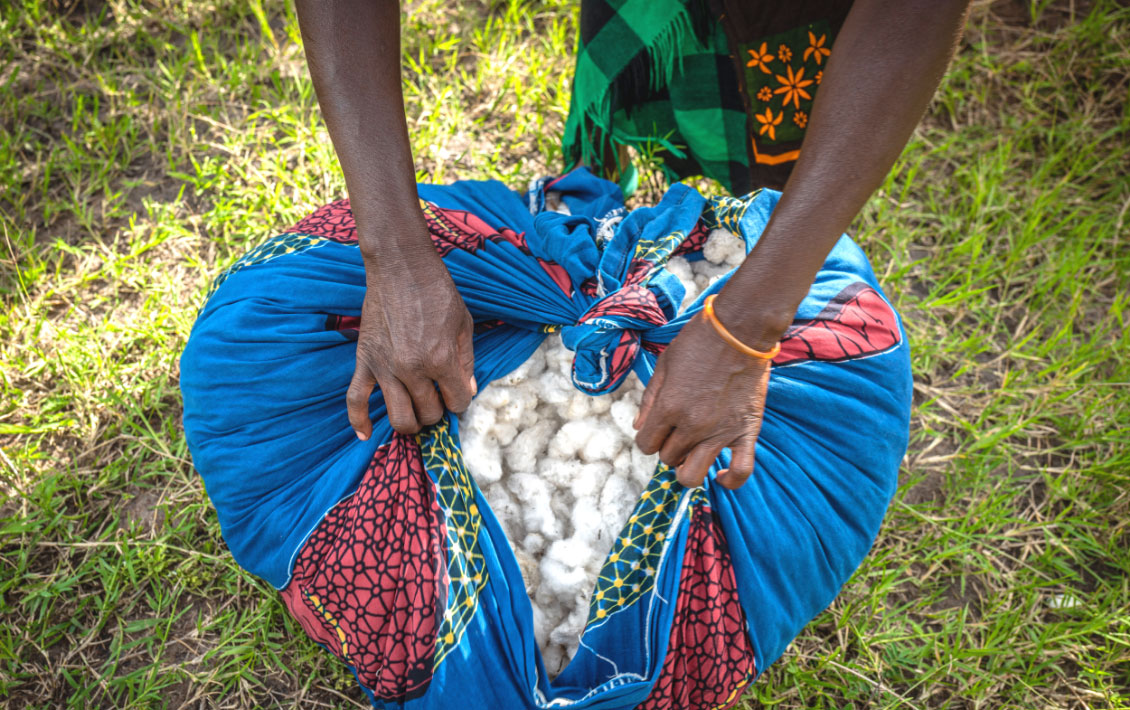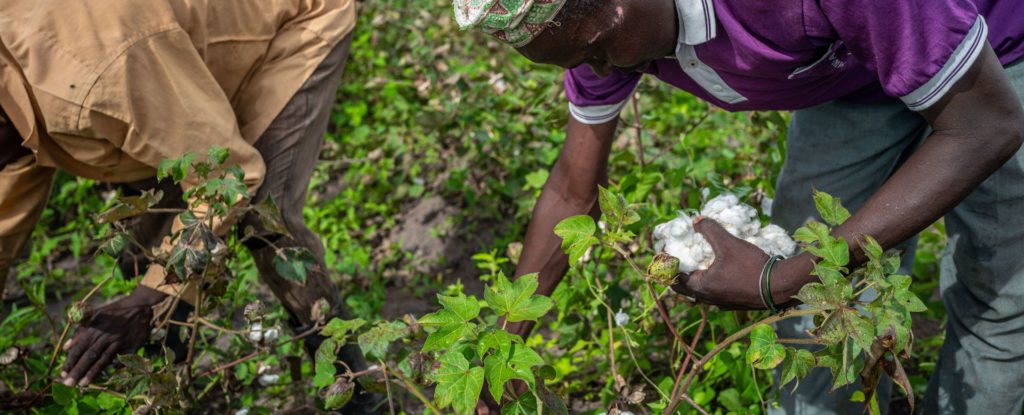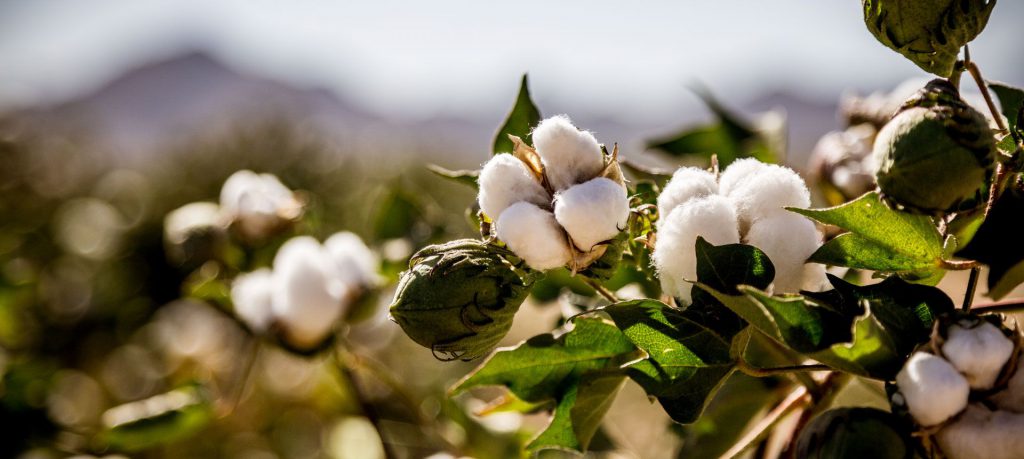It is man versus machine: cotton in the US, Brazil and Australia is harvested using gigantic machines, but in agricultural parts of Africa harvesting is done mainly by hand. Of course, that takes much longer, but it also has major benefits compared with machine harvesting. The machine makes one pass through the cotton field taking, not only the cotton boll, but everything in the field; however, human pickers work in a much more careful and environmentally-sound way, taking only completely mature fibre bolls. Hand-picked cotton is also cleaner, because the machines take considerable quantities of soil, leaves, twigs, etc. with them.
Another benefit is that hand picking, unlike machine harvesting, does not use defoliants, so there is less chemical contamination of the cotton. However, there are also quality issues that face African hand-picked cotton. Plastic waste has unfortunately spread, even to remote villages in Africa, and may lead to the presence of foreign material. CmiA is tackling this problem in cooperation with its African partners.











